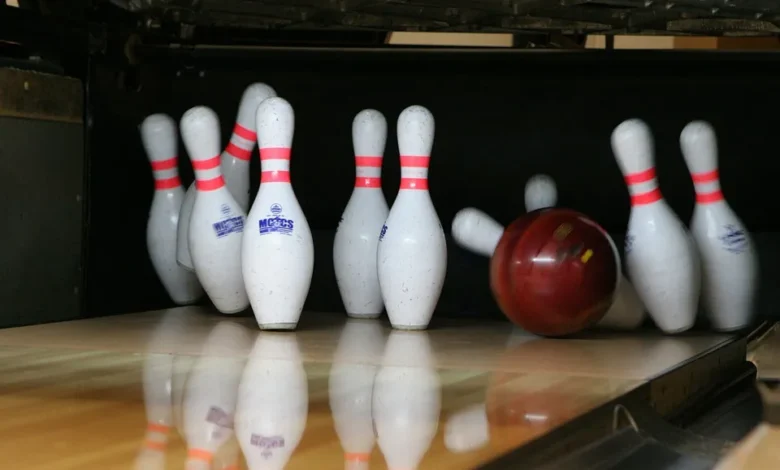Is Bowling a Sport

Is Bowling a Sport has been rolling down lanes for generations, captivating people from every corner of the world. Whether it’s in a smoky retro alley or under the neon glow of a modern entertainment centre, the question has always lingered among enthusiasts and sceptics alike: Is bowling a sport? This question stirs passionate debates, and it’s not just a matter of semantics. It dives into the soul of what makes an activity a sport, how society values physical effort, and whether competitive spirit trumps tradition. The conversation around “is bowling a sport” is richer than many realise, touching on aspects of history, skill, discipline, and even a bit of science.
You might’ve heard someone casually throw out the claim that bowling is more of a pastime or hobby. Maybe it’s because you can do it while eating nachos. Maybe it’s the fact that leagues often come with as many jokes as they do strikes. But once you peel back the surface of what bowling truly demands, a different picture starts to emerge. The keyword here isn’t just that bowling is a sport; it’s understanding how many layers this seemingly simple game has.
Defining What Makes a Sport
To understand the heart of the debate around whether bowling is a sport, we have to look at what qualifies any activity as a sport in the first place. Typically, a sport involves physical exertion, skill, competition, and often an established set of rules governed by a professional or recognised body. It should engage both the body and the mind. That’s where bowling starts to slide into territory many didn’t expect.
When people ask if is bowling a sport, they often overlook how precise the movements need to be. Every muscle from your wrist to your shoulder, down to your hips and knees, has to work in a rhythm. The weight of the ball, the oil pattern on the lane, and even the mental game of anticipating how pins react, all weave into this layered tapestry. Physical exertion might not be as explosive as sprinting or high-contact like football, but the skill requirement is undeniable.
The Skill Factor in Bowling
A major component in the debate of whether is bowling a sport lies in the immense skill it takes to consistently succeed. There’s a reason why even regular players can go years without hitting a perfect game. The alignment, timing, release, and ability to read the lane conditions turn each frame into a miniature strategy session. It’s not just throwing a ball; it’s crafting an outcome.
Each bowler has a unique style, often developed over countless hours of practice. Hooks, straight rolls, spin control, and pin action are terms only those truly engaged with bowling understand. If skill is a marker of a sport, then whether is bowling a sport becomes less of a question and more of a confirmation. Mastery in bowling requires just as much dedication as it does in more universally accepted sports.
Competitive Nature of Bowling
Let’s talk competition. No conversation about whether is bowling a sport can skip this. Bowling isn’t just about weekend fun; it’s a thriving competitive field. From local leagues to international tournaments, bowlers train, compete, and face pressure just like athletes in other sports. The intensity might not always come with roaring stadiums, but the stakes and emotional investment are very real.
Professional bowlers often undergo coaching, physical training, and mental conditioning. There’s prize money, rankings, and titles. In many ways, those who question whether is bowling a sport may simply be unfamiliar with the deeply entrenched competitive culture that lives within the lanes. People who compete at the top level dedicate their lives to improvement. That alone earns bowling its spot in the realm of legitimate sports.
Physical and Mental Discipline
One of the most underappreciated arguments in favour of answering yes to is that bowling is a sport that requires discipline it takes to perform well. Bowling calls for acute muscle control, fine motor coordination, and a high degree of mental focus. A bowler can’t rely on brute force. It’s about precision. A slightly mistimed step or misjudged release angle could ruin a game.
There’s also the endurance side. Competing in multiple games back-to-back in a tournament is taxing. Focus has to be maintained throughout. Mentally, each throw is a psychological test. Can you block out distractions? Can you recover from a poor frame? The same pressures found in high-stakes sports show up here, too. So when someone asks if is bowling a sport, it’s fair to answer with another question: how much more proof do you need?
Bowling’s Institutional Recognition
The structure and institutions around bowling also lend credibility to the claim. Leagues, governing bodies, collegiate programs, and even attempts at Olympic recognition show how seriously bowling is taken globally. In this light, asking if is bowling a sport is like asking if chess is a game of intellect — the answer is baked into how the world has responded to it.
There are standardised rules, sanctioned events, and a global community that celebrates talent. The Professional Bowlers Association (PBA) is just one example of how organised and legitimate bowling has become as a discipline. The infrastructure built around the sport is not the kind that develops around casual pastimes.
Cultural Misconceptions and Stereotypes
A big barrier to fully accepting that is bowling a sport stems from pop culture portrayals. Often, movies and TV depict bowling as a quirky side activity filled with laughs and little seriousness. It’s always the place where characters go to unwind, eat, and socialise. And while that fun, social element exists, it doesn’t negate the rigour behind the craft.
The truth is that many sports have recreational forms. Think of pickup basketball or backyard soccer. Just because it’s played casually doesn’t make the professional version any less valid. When we look at it bowling a sport, it’s crucial to separate the way it’s marketed or enjoyed from what it fundamentally is at its core.
The Evolution of Bowling
Bowling has come a long way from its ancient roots. It’s been modernised, digitised, and professionalised. Advances in equipment, technology, and training methods have elevated the skill ceiling. Those involved in serious play study lane patterns, invest in specialised gear, and adopt conditioning routines. The evolution of bowling is a key part of why is bowling a sport that deserves a yes.
Compare it to other accepted sports and you’ll see parallels — coaching staff, televised tournaments, global rankings. There’s an ecosystem that rivals any athletic discipline. Whether it’s ten-pin, duckpin, or candlepin, bowling’s diversity adds another layer to its legitimacy as a sport.
The Community Behind the Lanes
One thing that solidifies bowling’s place in the sports world is the community. Whether it’s a local league or a national championship, there’s a culture of camaraderie and competitiveness. People form teams, support each other, and train together. That’s more than a game — that’s a lifestyle rooted in shared goals.
When you ask if is bowling a sport, consider the people who show up week after week, rain or shine, to improve their game. That kind of commitment mirrors what you see in runners, cyclists, or martial artists. Bowling inspires that level of passion, which is not typical of something considered “just a hobby.”
Conclusion: Settling the Debate
So, is bowling a sport? The evidence stacks up like a cleanly knocked-over set of pins. Between the skill, physicality, competition, and community, bowling meets all the criteria of a sport. The only thing standing in its way is outdated perception.
Bowling deserves respect as a legitimate athletic endeavour. The players are athletes. The effort is real. And the game, when truly understood, showcases as much complexity and intensity as any mainstream sport. So next time someone tosses out the question Is bowling a sport, you’ll know how to roll out an answer as solid as a strike.

